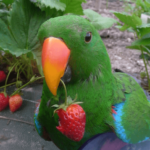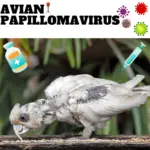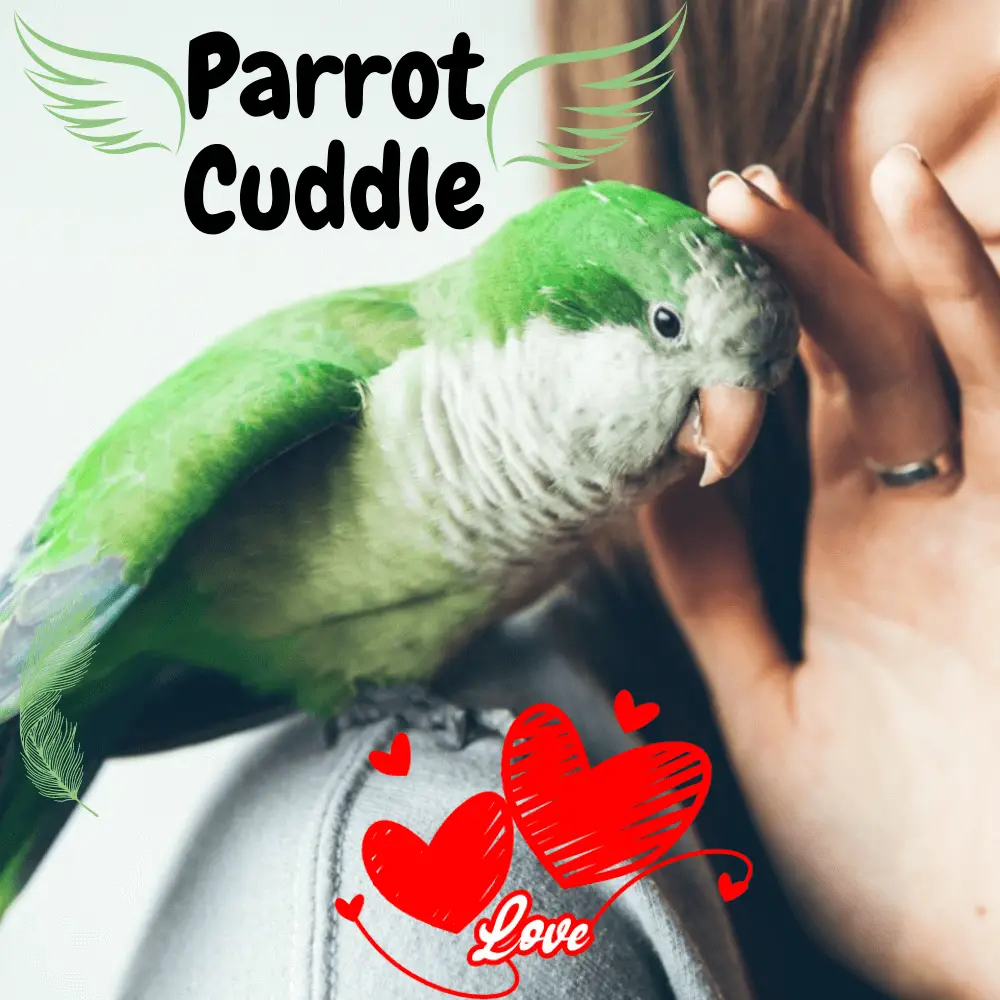
Parrot and parakeet cuddle: Parrots are ( for most species ) very physical and sensual animals. They need the intimacy that touch provides in order to meet their emotional needs and their overwhelming need for security. parrot cuddle is a very particular and essential tool that allows the creation of a strong and deep emotional bond with your bird as well as a gentle relationship of trust.
How to pet a parrot
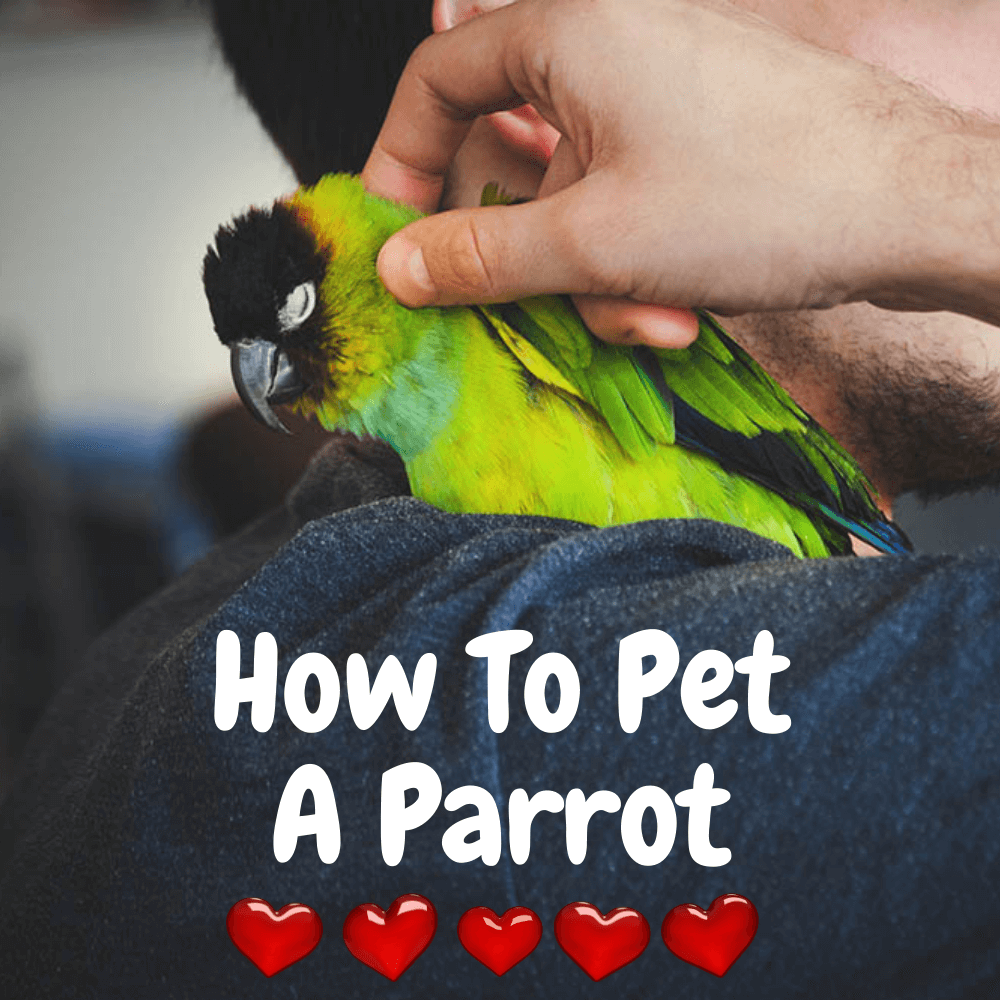
The choice to own a parrot largely goes through the shared pleasure that can be derived from the hugs it accepts from us. Sometimes we are lucky that he grants us this privilege right away, sometimes we have to wait. For the less fortunate or delicate masters, contact with psittacid may prove impossible.
But before embarking on sessions of unbridled “papouilles”, it is better to know the areas appreciated during caresses and those that are not. Often the first contact is made at the level of the beak, whose nerve endings transmit the sensations to the bird.
The first signs of acceptance of displays of affection are recognizable by the lowering of the head or even the ruffling of the feathers of the neck and the top of the skull. Our winged companion thus sends us an invitation to try our luck.
To begin with, caress it in the direction of the feathers, avoiding skin contact. Indeed, some do not like the sensation of the reversal of their plumage and their dermis is very sensitive, so it is better to abstain. In the period of molting, this will be even more true, especially since a certain nervousness can be added to it. Always pay attention to your companion’s reactions. If he seems to enjoy the contact, you can continue, but if you realize that it is not better to stop touching him so that he does not make a negative experience.
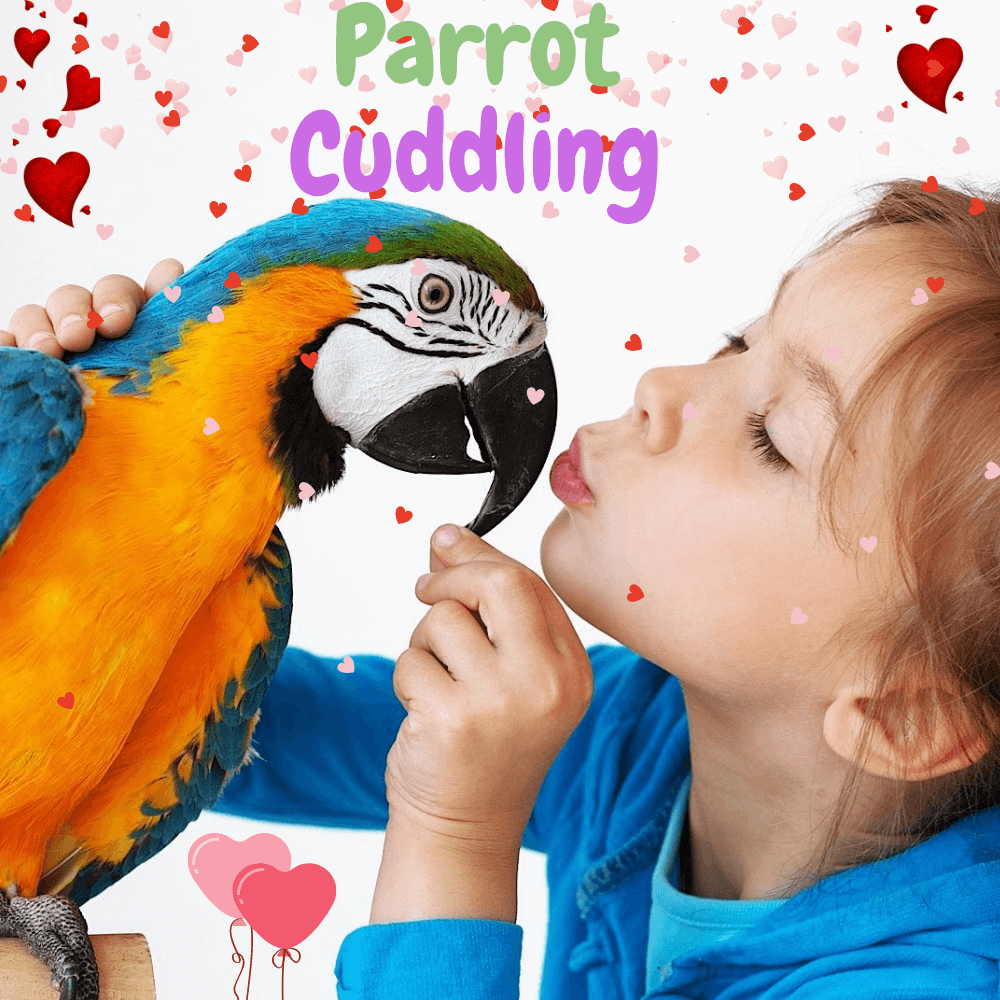
Some areas are more successful than others:
- The eye area
- The beak and the skin that delimits it
- The cheeks
- The ears
- The neck
- The underside of the wings
- The top and bottom of the tail, especially when the parrot has become very familiar
The legs
On the other hand, certain areas are to be avoided during the first caresses:
– the chest, which few birds let caress spontaneously at the beginning
– the top of the wings. My grey from Gabon waited a long time before granting me this favor.
– the back, which is a part of the body all the more sensitive as it is generally targeted by predators, which we can be assimilated to if we are not careful.
– the tail itself when the cuddle session ends, your psittacid shows you its satisfaction in different ways:
– it emits small giggles, similar to whispers- it yawns
– it swells its feathers and scrambles
– it stretches its wings
– it waves its tail from left to right, like a duck
would do
Remember that it is necessary to keep as a priority the well-being provided to your “feathered beast”, to be relaxed and attentive to its r” actions. Know how to recognize signs of disapproval, such as startles, attempts to pinch or avoid, etc. Never force a bird to let itself be caressed, however frustrating the wait, otherwise, its confidence in you would be damaged in the more or less long term.
Talk to him gently at all stages of your relationship, in order to soothe him and help him relax. It is an animal of great intelligence and there is no doubt that by respecting some basic rules, it gradually understands all the benefits that the caresses of its human can bring it.
The importance of cuddling
In nature, in most species of parrots, physical contact is highly developed between members of the same social group. Parrots cuddle each other to feed each other, groom each other, stroke, play, etc. Everything seems to be a pretext for initiating physical contact. It is only in the scheme of things that the “domestic” parrot seeks this kind of contact with its human companion and within its social group.
Parrot cuddle should be an integral part of his parrot’s socialization. To develop a great relationship, it would be best if you could touch and handle him with confidence. A normally constituted parrot has an equally pressing need to feel secure as it does for a companion. He should ( ideally ) have no apprehension towards his human. You have to prove to him or her that you are the one who wants to represent the ideal companion.
How to pet a parakeet
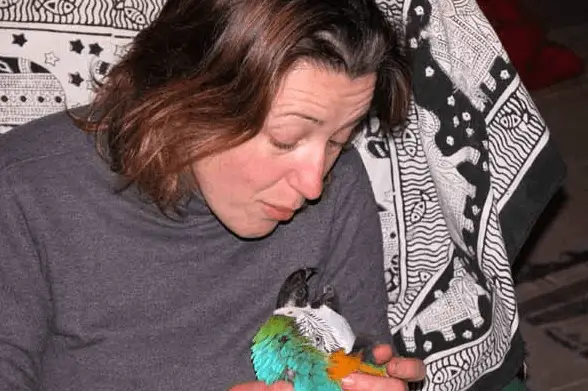
My philosophy of life with parrots is one of exchange and reciprocity. It gives/take: the human must have enough complacency to be able to transform from time to time into the perfect parrot companion and behave as if he were a parrot himself.
The perfect human companion is one who is very open-minded, has no inhibitions, and lives very comfortably with the innate behaviors of his bird.
The parrot cuddle is one of the attitudes that our winged companion appreciates the most from his human. This way of incorporating the bird’s innate attitudes into your own behaviors and gestures can only bring you closer to your bird while sending the message that you understand and respect their needs.
Feathers
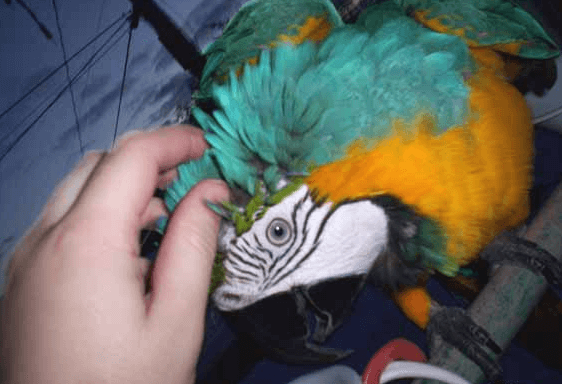
One of the parrot’s most prized touches is grooming ( debarking ) the ripe feathers of its head, cheeks, and neck. Indeed, these places are hardly accessible to him and he will need the intervention of a partner to perfect his toilet. This seemingly harmless gesture also serves to strengthen emotional ties. There is the groomer (the one who unsheaths the feathers ) and the groomer (the one who confidently accepts to be pampered ).
It is a gesture of great sensuality and a moment of privileged intimacy. You always start this kind of grooming session by advising the bird of your intentions with a phrase like: “Come scratch your head”.
I hear someone laughing… This is what I tell my birds, so, please.
This way of doing things reduces the bird’s anxiety and it can therefore begin to anticipate the happiness it will have in letting itself be pampered under your nimble fingers. Then, delicately, feather by feather, you scrape the keratin sheath which covers the small quill (small peak on the top of the head) between the nails of your thumb and index finger.
The latter will crumble into small flakes and the new feather will appear under the action of your fingers. A moment of ecstasy for your bird. Then, you gently tilt your head in his direction, indicating to him that you wish to become the “groomed” and offer him your hair to be groomed ( without shell or hairspray ). He will love doing this intimacy with you and will feel important to you.
Parrots like to know that they are needed.
By performing this simple bird gesture, you will strengthen the bonds that unite you.
Beak

Another parrot cuddle touches very popularly with our sensual winged companion: playing with his beak and his tongue with our fingers. Parrots use their beaks and tongues a lot for socializing. These are very sensitive and have a lot of nerve endings, so they are powerful erogenous zones in our birds.
Of course, during hormonal periods, this kind of caress can take on its full meaning … It’s up to you!
Playing and stroking a parrot’s beak sends it two messages:
1. I like having periods of intimacy with you ( yes! Yes! Don’t blush! ).
2. Your beak is not a weapon for me, I am not afraid of it.
A bird that takes pleasure in “playing” at terrorizing its surroundings with its beak may be very surprised by your attitude and completely stop biting, having found a more pleasant use for its beak.
Feed me
There is still a parrot cuddle which is defined as follows: I give you the most beautiful gift there is… very hot and predigested food… A real treat!
Parrots demonstrate their attachment by feeding each other. In a back and forth movement, they regurgitate food from their crop and then offer it to the object of their affection. In a domestic context, it’s a safe bet that you will be this object and that you will have to learn to accept this kind of gift, to say the least unusual.
Never cringe or look disgusted at this behavior. Your bird is convinced to make you very happy and will not be able to understand your repulsive reaction. Your best bet is to accept this warm, sticky, and fragrant present in your hand on a tissue. If your sweetheart is a cute little lovebird, this is quite trivial, but in the case of a large macaw, I must admit that sometimes you have to have a strong heart, depending on what he has swallowed before. … Ouirch!
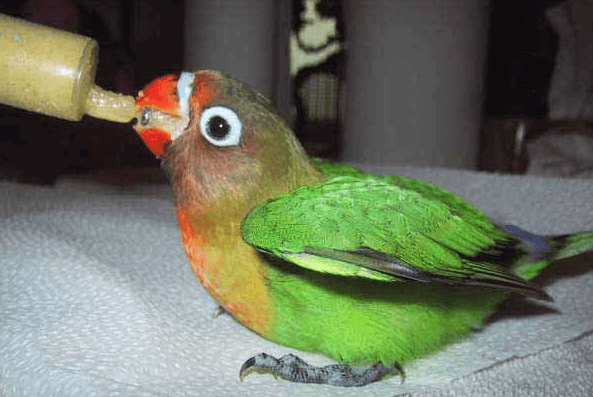
You yourself can use this “bird gesture” to strengthen your emotional bonds with your companion. Offer her hot food ( not too much, 106 ° F or 40 ° C ) with a syringe or a spoon ( oatmeal, cream of wheat, baby cereal, etc. ) to make her feel like you are regurgitating her. good, hot, predigested food like a parrot companion or parent would.
It would be wrong to believe here that this gesture could make your bird regress. I have an Amazon over 50 in my house who literally loves that kind of attention and, if it’s a 3- or 4-month-old kid, how far do you want them to go down? Directly in the bud ?! A baby parrot cannot regress any further than a… baby parrot. So, we don’t care and we continue to offer …
You now have one more string on your bow to become an ideal bird companion. Your parrot will appreciate that you adopt for him attitudes that he knows and reassure him. Let’s say it’s a little more “checkmark” in your relationship.
Parrot Snuggles & Cuddles
SOURCE:Adventures of Roku

